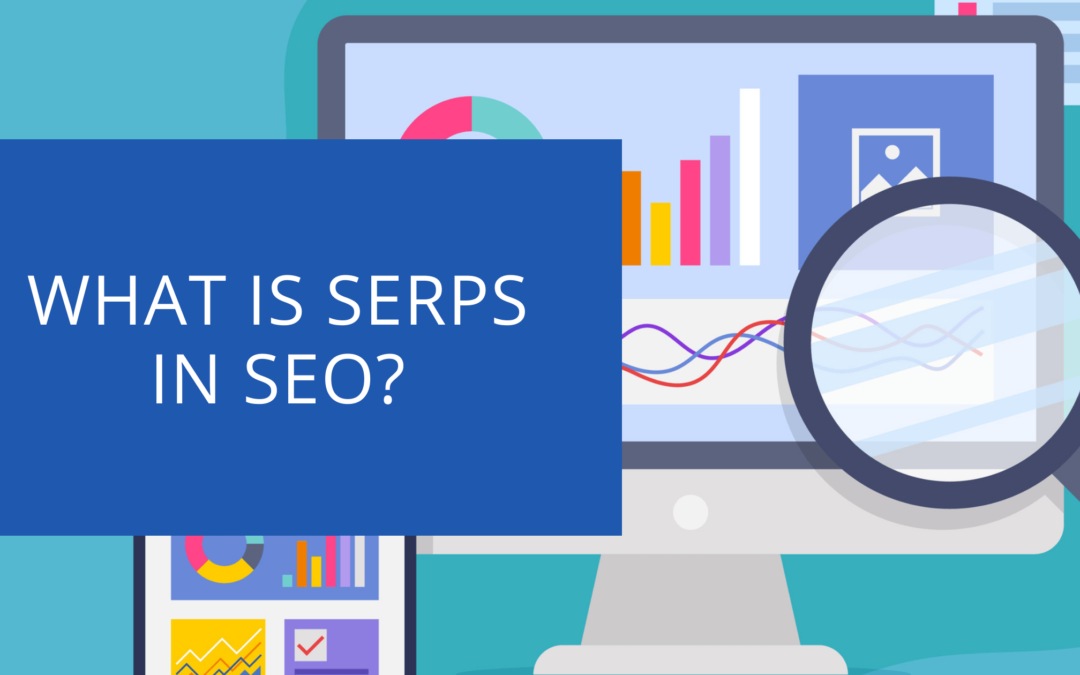SERPs, or search engine result pages, are one of the most important aspects of SEO. When someone performs a search on Google, or any other search engine, the results that are displayed are the SERPs. In order to rank high in these results, you need to understand how SERPs work and how to optimise your website for them. In this blog post, we will discuss what SERPs are and how you can improve your ranking on them!
Contents
What is a SERP?
SERP stands for Search Engine Results Page, SERPs are the search engine result pages that are displayed after you enter a query into a search engine. The SERP is made up of a number of results, or listings, that are ranked by the search engine based on a variety of factors including the relevance of the content to your query, as well as how authoriative the website is.
Different types of search queries
There are three main types of search queries: navigational, informational, and transactional.
 Search intent also known as user intent is the reason why someone types a particular query into a search engine. It’s what drives people to search, and it determines how they want to be served by their results.
Search intent also known as user intent is the reason why someone types a particular query into a search engine. It’s what drives people to search, and it determines how they want to be served by their results.
Understanding what searchers are intending to do with their queries can help you create content that meets those needs, which can result in higher rankings and more traffic.
- Navigational: People use navigational queries when they know the website they want to visit. For example, “google” is a navigational query that returns results for Google.
- Informational: People use informational queries when they want information about a particular topic. For example, “how to make a chinese lantern” is an informational query that returns results related to how to make chinese lanterns.
- Transactional: People use transactional queries when they want to buy a particular product or service. For example, “buy running shoes” is a transactional query that returns results for places where you can purchase running shoes online.
Features of SERPs
- Organic search results: The main feature of a SERP is the organic search results. These are the listings that are returned by the search engine based on its assessment of the relevance and authority of the website. Organic search results are typically displayed in a list format, with the most relevant result at the top followed by less relevant results.
- Paid search results: Paid search results are listings that are sponsored by a business in order to appear at the top of the SERP. They are denoted by a small yellow ad label and arrow next to the result, as well as the text “Ad”.
- Direct Answer Box: The direct answer box is a special result that is displayed at the top of the SERP. It contains an answer to the query, as well as a link to the source.
- Featured snippets: Featured snippets are a type of rich result that appear at the top of the SERP. They contain a summary of the answer to the query, as well as a link to the source.
- Google Image Results: Google image results are images that are returned in response to a query. They are typically displayed as thumbnails next to the relevant text results.
- Knowledge graph and panel: The knowledge graph is a special box that appears on the left-hand side of the SERP. It contains information about the query, such as the definition or a list of related queries. The knowledge panel is a subsection of the knowledge graph that contains more detailed information about a particular topic.
- Local pack: The local pack is a special result that displays information about businesses that are near the user’s location. It includes the business name, address, phone number, and star rating.
- People also ask: The people also ask box is a special feature that appears in the SERP. It contains a list of related questions and their answers, as well as links to the source.
- Carousel: The carousel is a special type of result that displays images and titles for different websites. It typically appears at the top of the SERP.
- Related queries: Related queries are a list of related search terms that appear at the bottom of the SERP. They are based on the keywords that were used in the query, as well as other relevant terms.
- Shopping results: Shopping results are a type of result that is specific to Google Shopping. They appear at the top of the SERP and contain listings for products that are available for purchase online.
- Sitelinks: Sitelinks are a type of result that appears beneath the main listing on the SERP. They are links to different pages on the website.
- Top Stories: Top stories are a special type of result that appears at the top of the SERP. It contains links to the latest news articles about the query topic.
- Twitter Results: Twitter results are a list of tweets that are related to the query topic. They appear at the top of the SERP and are sorted by relevance.
- Video Results: Video results are a list of videos that are related to the query topic. They appear at the top of the SERP and are sorted by relevance.
- Maps: Maps are a type of result that displays information about businesses or locations that are near the user’s location. It includes the business name, address, phone number, and star rating.
Ranking Signals
 There are many different ranking signals (over 200!) that Google takes into account when determining the relevance of a website for a particular query. Some of the most important signals include:
There are many different ranking signals (over 200!) that Google takes into account when determining the relevance of a website for a particular query. Some of the most important signals include:
- The quality and quantity of backlinks to the site
- The relevance of the content on the site to the query
- The user’s location and language preferences
Tracking your SERP positions
In order to track your SERP positions, you can use a rank tracker. A rank tracker is a tool that monitors the position of your website for specific keywords. There are many different rank trackers available, dedicated services for tracking rankings only, such as SerpFox, and full SEO tool suites lke ahrefs and SEMrush. Google Search Console will also show your positions.
Google Search Console
Google Search Console is a free tool that allows you to monitor your website’s search performance. It includes information about how often your site appears in the SERP, what queries caused your site to appear, and how much traffic you’re receiving from Google search.
Dedicated Rank Trackers
Rank trackers are tools that allow you to track the position of your website for specific keywords. There are many different rank trackers available, we use SerpFox to track our clients rankings.
Using a rank tracker is a great way to keep tabs on your site’s search engine rankings and see how they fluctuate over time. This can help you identify any potential problems with your SEO strategy and make necessary adjustments.
SEO Tool Suites
SEMrush
SEMrush is a tool that allows you to research competitor websites and track their search engine rankings. It includes information about which keywords each website is targeting, as well as their respective ranking positions.
This tool is great for understanding what strategies your competitors are using to get traffic from Google, and then replicating them yourself.
ahrefs
ahrefs is a tool that allows you to research backlinks, keywords, and competitor websites. It includes information about the number of backlinks and referring domains each website has, as well as their respective ranking positions.
This tool is great for understanding which websites are linking to your competitors, and then reaching out to them yourself to get links as well as tracking your SERP positions.
Improving your SERP positions
 Here are the best strategies for boosting your SERP positions and organic traffic
Here are the best strategies for boosting your SERP positions and organic traffic
- Keywords research: The first step in any SEO strategy is doing keyword research. This involves identifying which keywords you want to rank for and then creating content that is optimised for those terms.
- Optimise your onpage with your keywords: Once you have targeted a few keywords, make sure to include them throughout your website. This includes in the title tags, meta descriptions, H tags, and body copy.
- Build high-quality backlinks: The best way to improve your SERP positions is by building high-quality backlinks from reputable websites.
- Create and optimise content around your keywords: In addition to targeting keywords, you should also create high-quality content around those terms. This will help you become a topical authority.
- Build citations: Citations are another important ranking signal, so make sure to list your business on reputable online directories.
- Use social media: User social media to share your pages and content.
- Optimise images: Optimise your images by using the correct file name and adding keywords to the alt tag.
- Improve page speeds: Make sure to optimise your website for page speeds, as this is a ranking factor that Google takes into account.
Search Engine Results Page (SERPs) FAQ
What is a SERP?
The Search Engine Results Page (SERP) is the page that displays the results of a search engine query.
How many results are displayed on a SERP?
Google usually displays around ten results per page, though this can vary depending on the keyword being searched for.
What is the order of results on a SERP?
The order of the results on a SERP is determined by a variety of factors, including the relevance of the keyword being searched for, the website’s authority, and how well it has been optimised.
What are the different types of results that can appear on a SERP?
There are a variety of different types of results that can appear on a SERP, including organic results, paid results, local results, and Knowledge Graph results.
How do I improve my ranking on a SERP?
There is no one-size-fits-all answer to this question, as the best way to improve your ranking depends on the website and its competition. However, some of the most effective methods include doing keyword research, optimising your onpage elements, building high-quality backlinks, and creating great content.
What is a SERP tracker?
A SERP tracker is a tool that allows you to track your ranking position for certain keywords. This is useful for understanding how well your SEO efforts are working and identifying which keywords you need to target next.
Conclusion
SERPs is an acronym for “Search Engine Results Pages” and refers to the pages that are returned by Google in response to a user’s query. SERP positions are determined by a number of different factors, including the relevance of the content and how many backlinks it has and the quality of those backlinks.
Improving your SERP positions can be accomplished through a variety of different strategies, including doing keyword research, optimising your onpage content, building high-quality backlinks, and creating and optimising content around your keywords.

